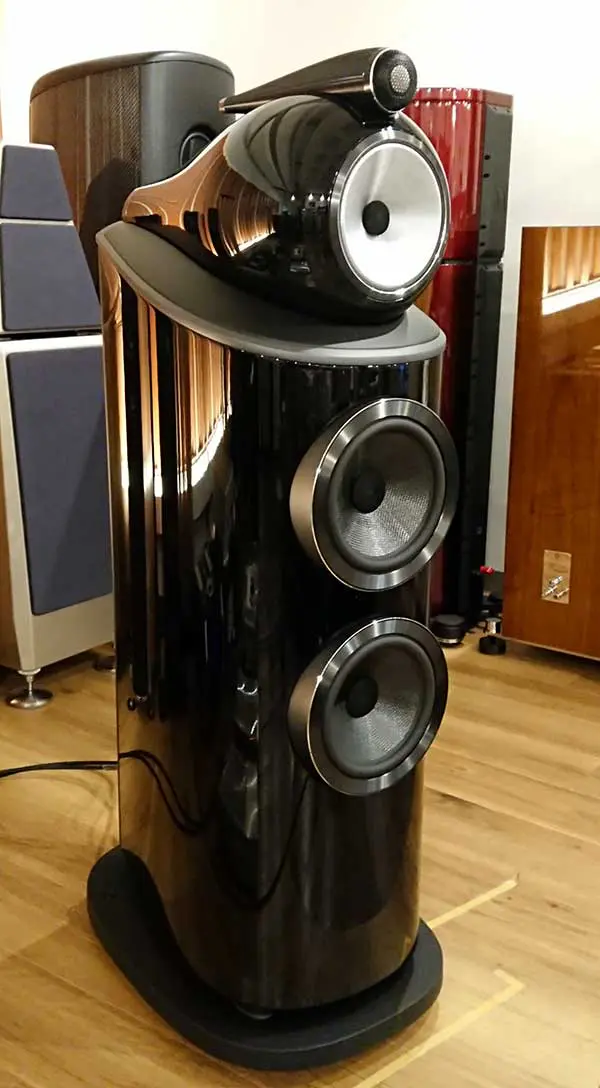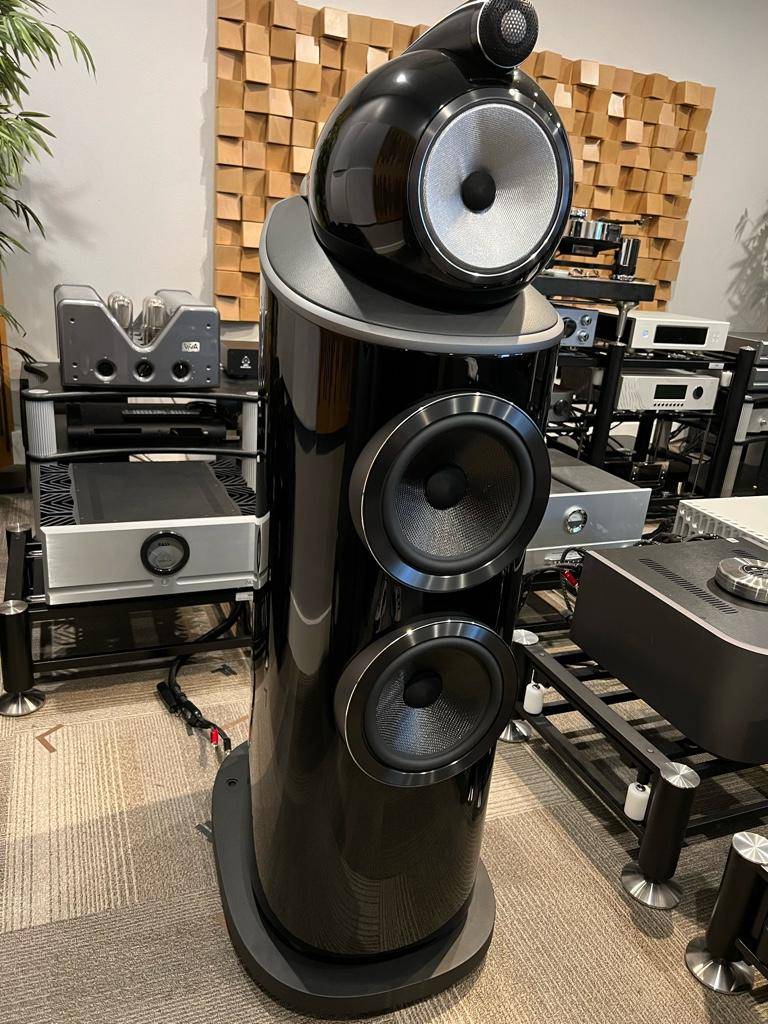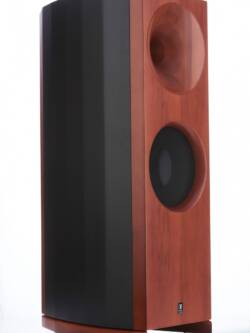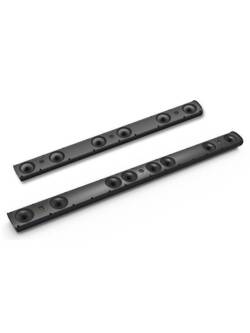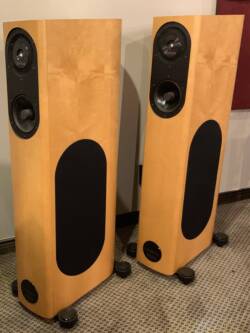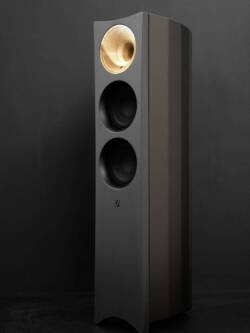B&W 802D4 Floorstanders
Original price was: R690,000.00.R460,000.00Current price is: R460,000.00.
TECHNICAL SPECIFICATIONS
- Type: 3-way, four-driver, floorstanding speaker with reflex loaded enclosure.
- Driver complement: One 25mm diamond dome tweeter; one 150mm Continuum cone midrange driver with FST surround; two 200mm Aerofoil cone bass drivers.
- Frequency response: 17Hz – 28kHz (+/-3dB from reference axis)
- Impedance: 8 Ohms (minimum 3.0Ω)
- Sensitivity: 90dB/ 2.83Vrms at 1m
- Dimensions (HxWxD): 1218 x 413 x 602mm
- Weight: 88.1kg/each
- Finishes: Cabinet: Gloss Black, White, Satin Rosenut, Satin Walnut Grille: Black, Grey
- Price: £24,000/pair
Description
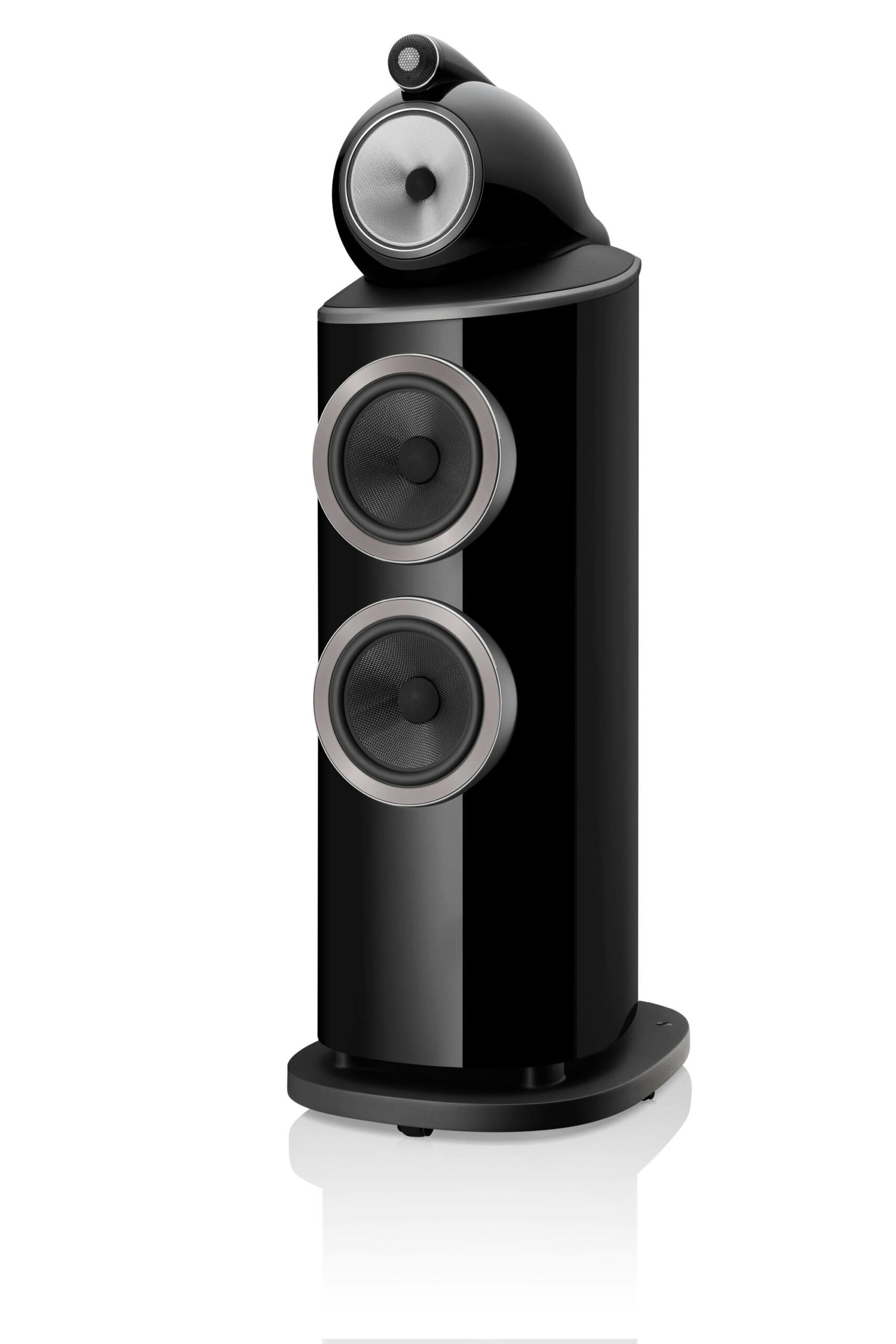
Abbey Road is about as iconic as British recording studios get. So it’s to Bowers & Wilkins credit that the company’s loudspeakers have been used there since 1980, when they were initially used for film scoring but also hit albums including Hounds of Love; maybe that’s why it’s my favourite in Kate Bush’s back catalogue. You can see the older models lining the corridors at Abbey Road; they clearly never throw anything away, but for the official launch of the new 4th generation 800 Diamond series a pair of the new 801 D4s had been hauled into the studio two control room so that visitors could listen to them. Presumably Bowers & Wilkins had no control over what was played otherwise they might have chosen something other than the Mary Poppins Returns soundtrack, but it made it clear that the company’s latest range topper is a very capable loudspeaker (even Emily Blunt didn’t sound that bad).
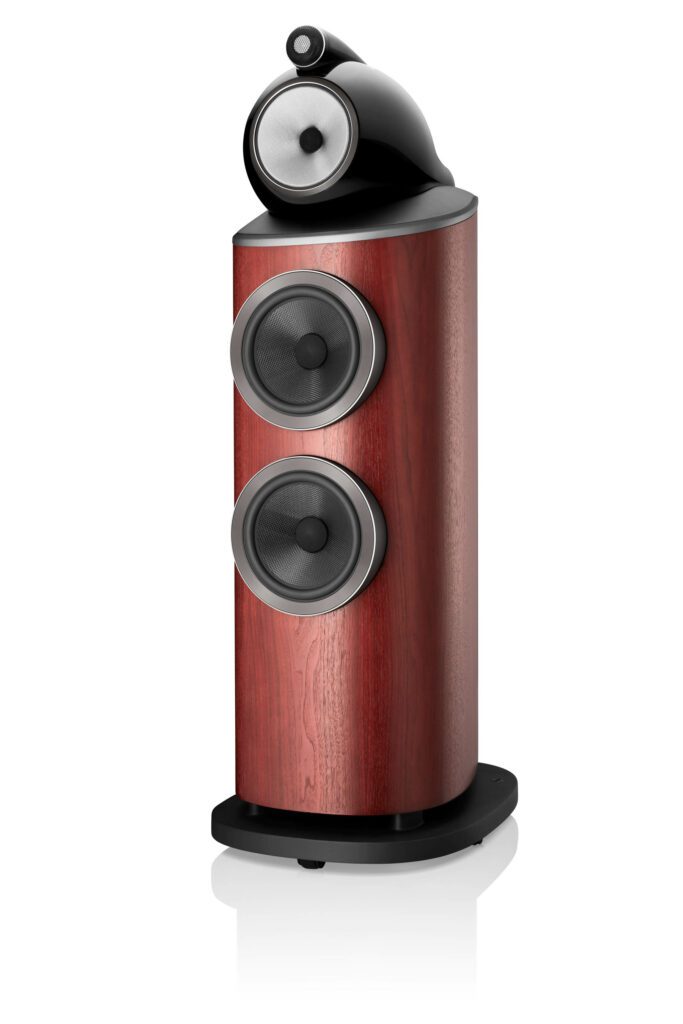
Bowers & Wilkins has been rolling out a new 800 Series every five years or so for the last couple of decades but it has not always been thus. The first example of the breed was the 801 in 1979 and that remained at the top of the tree until 1987 when the Matrix internal bracing structure was introduced. In 1998 the company decided to incorporate some of the ideas developed for the radical Nautilus speaker into the new 800 Series. This was when the distinctive midrange ‘head’ first appeared; its curves machined out of synthetic stone but finished in gloss black, which given the popularity of Corian in high-end kitchens seems an odd move, but then again kitchens are probably not what most high-end audio enthusiasts dream of. This series also employed bent ply cabinets – substantial ones at that – requiring significant tooling investment and providing an extremely stiff structure for the bass drivers to work in. The next move was the introduction of the diamond tweeter dome in 2005, a part which stayed with the following D2 series in 2010 and carried through to the D3 five years later, when the ply wrap was reversed and the iconic yellow Kevlar midrange was swapped for a Continuum cone.
Taken an extra year
The latest 800 Series has taken an extra year because of some pandemic thing. It retains the diamond tweeter dome but there have been big changes made to the rest of the high frequency system. The most obvious being that the housing is twice the weight and nearly three inches longer; this makes it stiffer and allows the tweeter to go down further in frequency without distortion. The magnet count has been reduced to two from three, which reduces compression behind the dome. Likewise, there are twice as many holes in the voice coil former for lightness and ease of movement. Equally important is the way that the tweeter housing is connected to the midrange or Turbine Head beneath it, there are now two rather than one silicone mounting that provide better decoupling than the previous system.
The midrange enclosure also sits on silicone decoupling with four points of contact. This enclosure transitioned from synthetic stone to aluminium in the D3 series but the tuned mass dampers within it have been ‘re-optimised,’ or ‘improved’ as it’s known, this time around. The biggest change to the midrange driver is in the spider that centres the coil former in the throat of the magnet. For what seems like millennia this job has been done by doped and corrugated fabric which is light and flexible enough to allow the cone to move but stiff enough to keep it centred. Bowers & Wilkins’ research elves have been working on a replacement for over a decade, which suggests that the new six leg, thermoplastic spider was not as easy to create as it looks. This looks deceptively simple, but it is very open compared to the normal variety and makes considerably less noise, 80dB less at 1kHz apparently, which sounds like a lot but presumably they weren’t that noisy in the first place. However, in the process of refining the midrange system, the speaker has become more revealing and transparent to such changes. This ‘Biomimetic Suspension’ will likely be rolled out across Bowers & Wilkins’ 600 and 700 series three-ways as it’s not intrinsically expensive, it just took a long time to get right.

The bass cabinet continues to be made out of bent ply but now all the forming is done in the company’s Worthing facility in the UK where the entire 800 Series Diamond range is built. Formerly reserved for the largest models, it has rolled out this construction method across the 800 Series range and has had to add to the array of huge presses in the factory to accommodate this. What you can see has changed here is that the collar beneath the head is no longer wooden but made of a large aluminium casting that is finished in leather; this is said to be more accurate and stiff than the previous approach, it also provides a capping for the neat fluted metal back plate. Inside the box the matrix has been braced with aluminium that is glued and screwed in place. The bass drivers bolted to this solid structure are eight-inch Aerofoil cone types with a new foam anti-resonance plug, internally the metal elements of the motor structure have been upgraded to a steel with very low electrical conductivity and lower inductance, which has apparently reduced distortion over the previous system.
Tilt test
The support plinth is a larger aluminium casting than it was and has threaded holes at the back for tilt test compliance; the latest 802 being more top heavy than its forebear (as I found the first time I went to move them). There are four wheels beneath it; two of which rotate to make manoeuvring these substantial (88kg/194lb) beasts around a little easier, when the spikes are up that is. The spikes are also substantial and have locking collars that are rather like wingnuts so can be tightened without a tool; fortunately Bowers & Wilkins supply magnetic pucks for those of us who want to keep our flooring puncture free. Cable connections are made through plated copper terminals with spade-ended jumper cables provided to allow single wiring.
Steve Pearce, Chief Acoustic Engineer at Bowers & Wilkins’ SRE research centre, said that the acoustic team had worked on improving musicality and coherence when tuning the fourth generation Diamond series. If the last 802 D3 had a weakness that was it; they couldn’t be faulted in terms of detail resolution, imaging and perceived distortion but didn’t always deliver the most engaging result. Or to put it another way, you needed a very special amplifier to make them charming. The 802 has higher than average sensitivity of 90dB but controlling the bass requires power and combining power with speed in an amplifier is a difficult job. However the 802 D4 does indeed sound more musically compelling than its forerunner without any real change to the load so the many other changes to the system have clearly borne fruit.
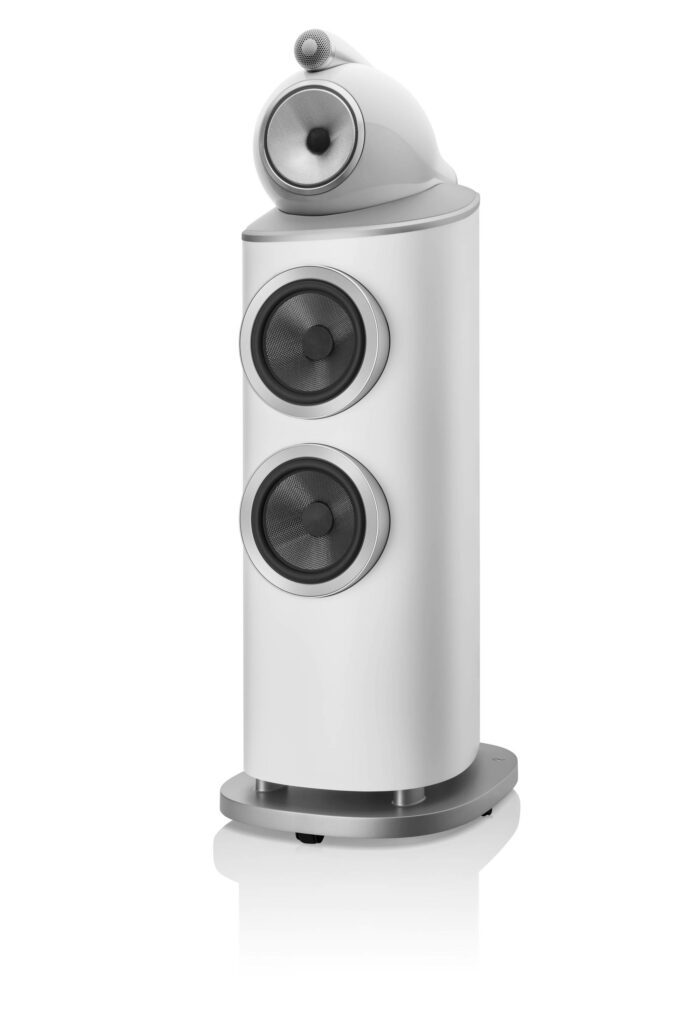
I started using the 802 D4s with Bryston 7B3 monoblock power amplifiers, genuinely mighty beasts with a specified 700 Watts with which to get any speaker to jump when they say so. These are not the most charming amps but they do allow this speaker to produce beautiful low end and superb imaging of the genuinely holographic variety. The sound produced is both rich in the small details that define the nature of the instruments, voices, recording method and production as well as the power that gives dynamics real impact. They do the micro and the macro with consummate ease and made Hania Rani’s Home [Gondwana] sound gorgeous even though it’s not the most polished of productions.
Switching to my regular power amplifier, the Moor Amps Angel 6 I was immediately impressed with the depth of image produced by the reverb on Dan Berkson’s Dialogues album [Freestyle], the sound wasn’t as incisive as with the Brystons but it timed almost as well. The 802 D4s reveal a mountain of detail with a good source like the Rega P10, there is so much going on in the track ‘Unity’ especially in the drums and percussion and it’s all clear and easy to follow, right down to the quietest parts. This is what you get when the speaker adds so little to the sound, the smallest sounds come through and reinforce their more substantial fundamentals to create a richer and more complete overall picture. I really enjoyed Patricia Barber’s Live: A Fortnight in France [Blue Note], an album that rarely seems to live up to expectations, something that’s easy to put down to weaknesses in the recording. But it seems that when the system and in particular the weakest part of the system, the speaker, is delivering more signal and less colouration it comes together.
On Haydn’s Quartets each instrument inhabits its own clear three dimensional space, the bump of the bows on strings placed clearly in front of the 802s gives you a real sense of realism, and (goose) bumps of your own, as well as lovely depth of tone. This loudspeaker has always been at its best when playing at higher levels, this brings up the midrange and adds to the precision of the imaging as well as the definition of the bass. The power and solidity they bring to Tom Waits’ ‘Shore Leave’ [Swordfishtrombones, Island] is excellent but such niceties fly out of the window when ‘16 Shells from a Thirty-ought-six’ comes on and there is no alternative but to cavort around the room with glee. If there’s energy on the record it comes out of these speakers with gusto, and yes that is a very good thing. Another energetic number that doesn’t always work is ‘Subway Station #5’ by Patricia Barber again, here the harmonics and atmosphere are superb with fabulous attack on the drums, the listener being drawn into the way that Barber builds up intensity with a repeated motif on the piano’s left hand keys while the rest of the band lay down the jam around this phenomenal rhythmic anchor. This piece proved to be totally mesmerising to an extent that it rarely does. These Bowers & Wilkins are powerful both emotionally and physically, they can move as much air as you like but remain calm under fire, seemingly never smearing the sound but letting it flow unfettered into the air.
Cerebral
With more cerebral material it’s the quality of imaging that becomes apparent, I love the way that they throw shapes in the air with sound. Laurie Anderson’s ‘Gravity’s Angel’ [Mister Heartbreak, Warner Bros] is good for this but the 802 D4s are better than most at getting the acoustic and synthetic sounds that she corrals to carve a space in the room. But that alone does not make a piece of music interesting for long, it has to make an emotional connection and this is where the 4th gen 802 Diamond has the edge over its predecessors. The same can be said for the bass which has always been a strongpoint of this loudspeaker but is now clearly better, it is supremely nuanced allowing the characteristics of each instrument or voice to be that little bit more expressive and interesting. Essentially there is less box and more original sound which means that the rumbles on the intro to Blade Runner do not blur with low synth notes, the fretless on Beck’s ‘Paper Tiger’ is clearly the same as that on Serge Gainsbourg’s ‘Melody Nelson’ and the fretless bass on Carla Bley’s ‘Life Goes On’ is obviously Steve Swallow.
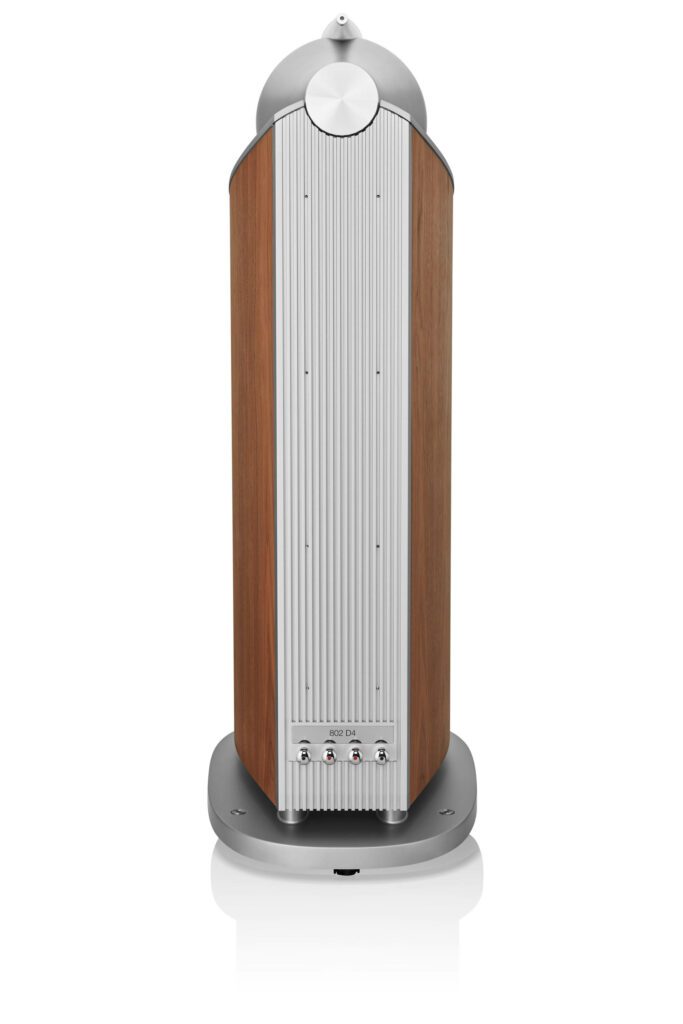
The Bowers & Wilkins 802 D4 is more expensive than its forebear but so is everything else around us, including the competition, which in all honesty struggles to compete. Bowers & Wilkins makes more high-end loudspeakers than anyone else in the world, 6,500 pairs of 800 series models a year in fact, and this gives them an economy of scale that means the 802 D4 costs half as much as its nearest serious competitor. It may not have the snob appeal of boutique brands but it has a phenomenal R&D dept that produces world-class loudspeakers, and the 802 D4 is certainly that.
Many audiophiles know what a Bowers & Wilkins 800 Series loudspeaker typically sounds like, or at least we think we do. I’ve reviewed my fair share and even been blessed enough to own a couple of pretty cool Bowers & Wilkins speakers over the years. They have always been very accurate, polite-sounding, and downright excellent speakers when it comes to concepts like engineering, fit and finish, as well as resale value. What has me blown away about Bowers & Wilkins second from their top speaker (I am ignoring the Nautilus, which they still sell an amazingly large number of even after all of these years) is how it has significantly evolved in its high frequency sound. My knock on even the best Bowers & Wilkins speakers of the past is that they’ve historically been a bit bright or etched in the high frequencies. That a little bright high end is their signature sound and always has been. That is, until now with the D4 upgrades to the Bowers & Wilkins 802 loudspeakers. Whatever Andy Kerr and his vast team of engineers in the U.K. did from Version 3 to Version 4 is an audiophile epiphany. The highs are unlike what you expect while the rest of the speaker is just sublime.
The Bowers & Wilkins 802 D4 is second from the top speaker in their top-level 800 Series. The Bowers & Wilkins 801 D4 is the speaker that is specifically used in places like Abbey Road Studios and Skywalker Ranch, but the 802 D4 has a slightly less wide footprint and to my eyes looks more proportional. You likely will not miss the bass performance between the 802s and 801s in most use-case scenarios, especially if you add a subwoofer.
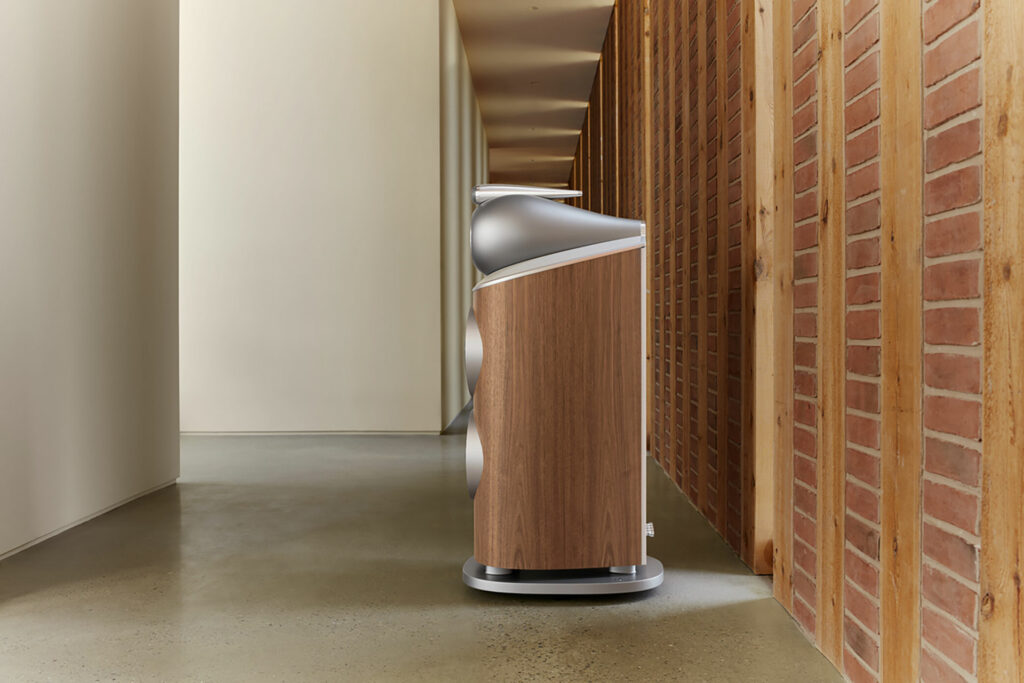
What Makes the Bowers & Wilkins 802 D4 Audiophile Loudspeakers Special?
- We talked about the improvement in the Bowers & Wilkins 800 Series D4’s tweeter, but I can’t make this point more strongly – it is radical. The high frequencies are staggeringly resolute with the ability to resolve the most minute musical details as well as present a stunningly wide image.
- Gone is the signature yellow Kevlar midrange driver that has been so often associated with Bowers & Wilkins speakers over the years. The fact of the matter is that others had co-opted the yellow Kevlar look and instead of pulling a Bose and suing everyone, Bowers & Wilkins just designed a new midrange driver that is not yellow but is much more independent from any effects of the bigger bass drivers, thus better sounding and more accurate. The new decoupled midrange is more taught and faster to recover as a speaker driver. It might not be as visually differentiated, but in terms of performance, this is one hell of an engineering feat that makes your mids sound open, solid, punchy, and downright awesome.
- I’ve had the Bowers & Wilkins 800 Series bass driver (from an 801) in my hands and wow, is it beefy. The company is using carbon fiber now to get extra extension while retaining amazing rigidity. They call their new design an Aerofoil Bass Cone. Let me be clear: you do not need a subwoofer with Bowers & Wilkins 802s to be happy. Adding one is icing on the cake.
- You can get the Bowers & Wilkins 802 D4 speakers in gloss black, gloss white, satin rosenut, and satin walnut as stock finishes. My pair are in white and offer an R2D2 look to them with the round organic shapes integrated into the speaker. If you want to go custom, you can pick any color that you like and Bowers & Wilkins will paint your speakers accordingly. That costs thousands extra and takes months, but a pearl white or a deep blue (like on their Signature 801s and 805s) is gorgeous. Note: the company uses robot sanders to get a beyond-car-level finish on its speakers. They go down to an ultra-fine 3000 grit sandpaper that leaves the speakers gleaming when sitting in your living room.
- The Bowers & Wilkins 800 Series speakers, including the 802 D4s, come with four spikes as well as two outriggers to help stabilize the speaker. Additionally, the 802 D4s have a larger, nicely finished bottom plinth that allows for even more stability. I am pretty sure the plinth could be removed in past versions but not anymore, and for good reason. In my case, with an 18 month old at home, I’ve even used matching white straps that are bolted into the wall for audiophile baby proofing.
- The 802 D4 speakers bring a very resolute, mastering studio sound to your listening room at home; however, they aren’t overly analytical. Most encouraging and unlike other excellent speakers in its class, the Bowers & Wilkins 802 D4s are able to present such a musically engaging sound even with less-than-excellent recordings.
- The Bowers & Wilkins 802 D4 speakers are not too hard to drive at 90 dB efficiency. You wouldn’t want to run a $500 integrated amp into these speakers, but you don’t have to go crazy on power and electronics out of the box. I used a Classé Delta Stereo Amp (read the review) for most of my listening. I also used one of Nelson Pass’ most lauded designs, the Pass Labs XA-25 (read the review), which is a pure Class-A amplifier and very linear. Both amps could drive the snot out the 802 D4s without a hiccup. (Reviews of both amp reviews are coming later in the year.)
- The form factor of the Bowers & Wilkins D4s is a bit slenderer than that of the 800s. And I like that. To my eyes I just like the lither look. Also, the money saved between the 801s and 802 D4s is enough to buy some serious supporting electronics, if you have the need, including a deep-reaching subwoofer like my SVS SB-4000, which was a bit over $2,000 retail the last time that I looked.
- I alluded to this earlier in the review, but the parts and build quality of the 802 D4 are simply unmatched in the high-end audio world. I’ve owned five pairs of Wilson Audio speakers (various versions of WATT Puppies over the years), two pairs of Revels, top-level MartinLogans, top of the line Paradigms, as well as my former reference speakers, Focal Sopra No. 2, and while they are all truly excellent speakers without question, the Bowers & Wilkins 802 D4s are every bit as good in every possible way. Build quality, imaging, bass, dynamics – everything. These other speakers are clearly in the game, but nothing bests the Bowers & Wilkins 802 D4s in the above criteria.
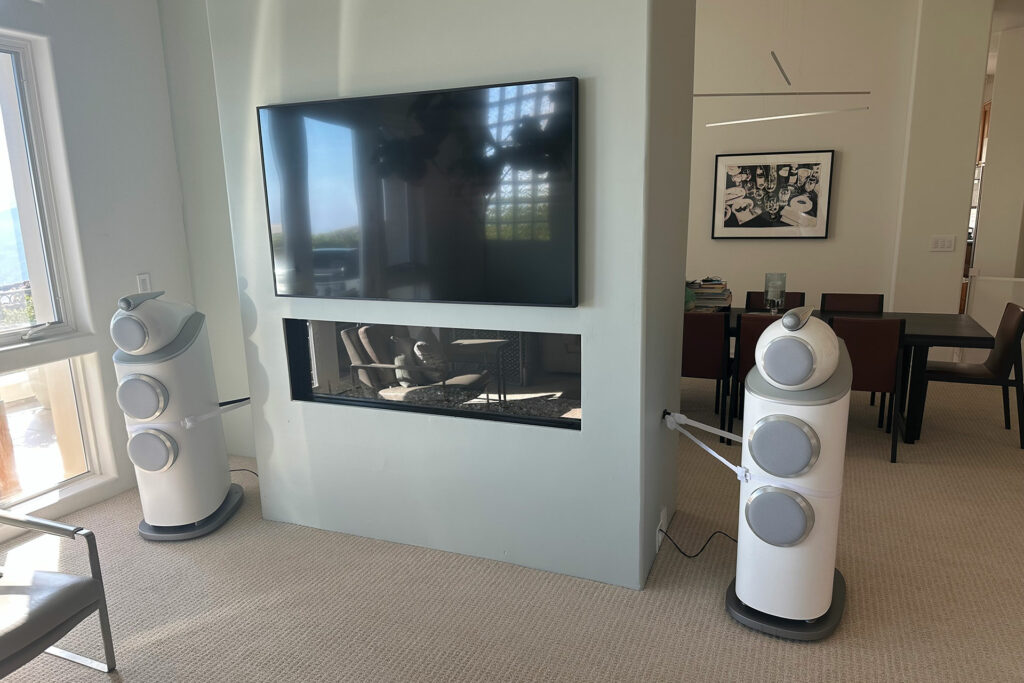
Why Should You Care About the Bowers & Wilkins 802 D4 Loudspeakers?
Rarely does anybody start their audiophile journey with a speaker as high-end as the Bowers & Wilkins 802 D4s, which is understandable at their price. For those who have been growing their system and want a truly world-class loudspeaker that is good enough to be the studio standard at Abbey Road and Skywalker Ranch, you might consider something from the Bowers & Wilkins 800 Series, such as the 802 D4s. They are capable of filling a big room, as I have an open-floorplan living room with high ceilings and sadly, pretty dicey acoustics. That’s just my reality in this house and with this system, but it doesn’t really matter because the 802 D4s perform admirably despite the acoustical and logistical handcuffs that I put them in. They’re as happy in a real-world living room as they are in a fully treated, world-class mastering lab.
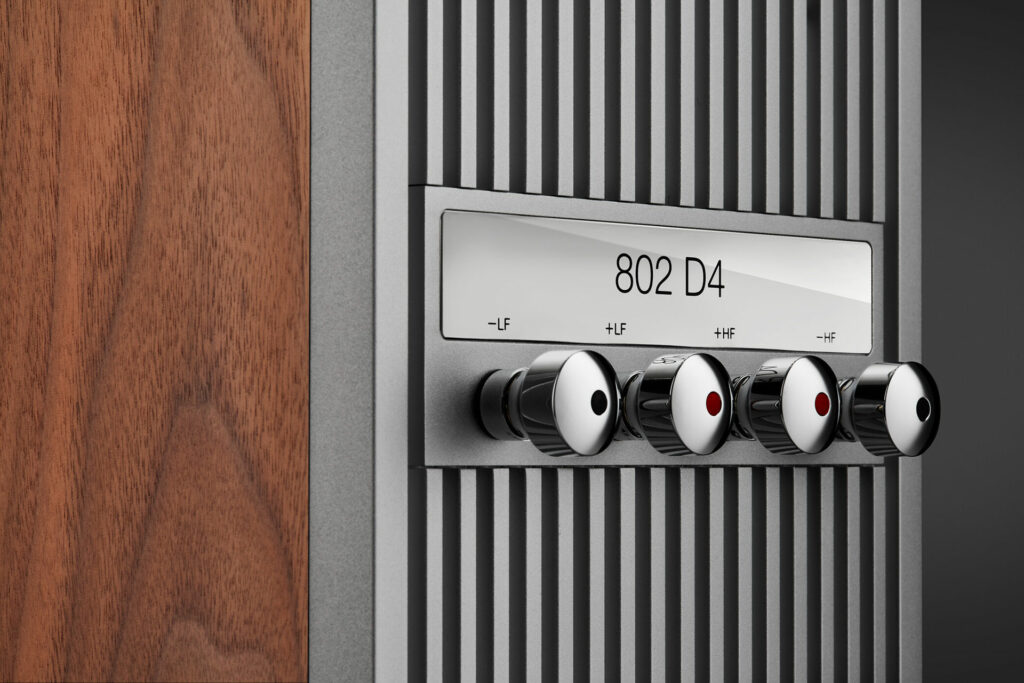
Some Things You Might Not Like About the Bowers & Wilkins 802 D4 Loudspeakers
- The 802 D4s are very modern and somewhat organic looking. While they appeal to me in a modern-looking white finish with gray accents, not the typical black, including some luxurious leather between the midrange driver and the top-mounted tweeter, even the wood finishes might be a little too edgy for people living in a more traditional décor. Custom paint could help, but there are other, more traditional looking speakers in the market that might be a little less visually challenging.
- The magnetic grills are really nicely integrated to the speaker, but they make for a very compelling toy for my little one. We keep Giovanni away from the speakers as best that we can, but it’s hard to explain that the midrange speaker grill isn’t a toy. My Revel B328 BE speakers (read the review) downstairs have a more integrated grill that is less likely to get lost or removed by a young one, but I like the look of the Bowers & Wilkins grills better in terms of an overall aesthetic.
- Like a Wilson Audio speaker, setup of the Bowers & Wilkins benefits from very incremental physical adjustments. By all means, you can expect your dealer to tune in your speakers using tape measures, lasers, and mirrors as I often do, but like other top-level audiophile speakers, the 802 D4s do benefit from taking the time and care to get the Nth degree of positioning, be it for bass performance or the imaging. Even with a fireplace in the middle of my speakers, I was able to get them to image to outrageously good levels after a few days of ¼-inch and maybe even 1/8-inch adjustments. None of this is hard, but some other speakers in this category can be placed roughly in their desired location and that’s that. The Bowers & Wilkins 802 D4s benefit from a little more tweaking and audiophile love.
Listening To the Bowers & Wilkins 802 D4 Loudspeakers…
I started my evaluation of the 802 D4s with my professional theme song, “You Never Give Me Your Money” from the quite appropriate Beatles record, Abbey Road on AIFF 1440 ripped from CD of the 2009 remaster I’ve never heard the piano sound on this track sound so delicate and engaging. McCartney’s bass sounds round and tight. As the song morphs into a more honkeytonk vibe, the depth of soundstage is truly notable. It was as if I’ve never heard this song before when listening to the Bowers & Wilkins 802 D4s, despite the fact that I’ve heard the track, start to finish, 200 times if I’ve heard it once.
Earlier, I mentioned how the 802 D4 speakers resolved an overall musical experience that was consistently enjoyable, be it with the best or most-modern recording as well as other legacy records that thrive in the performance and production category but might not hold up in terms of recording quality. “Don’t Give Up” from Peter Gabriel’s So 25th Anniversary Remaster Album is a perfect example. Tony Levin’s Chapman Stick (like a bass guitar and a very cool instrument) is the backbone of this lyrically life-affirming song. The depth and layering later in the track with the piano and dueling vocals is next level. I love the performance on this iconic recording, but even on SACD, this has always been a bit underwhelming on other high end audiophile speakers. Not the Bowers & Wilkins 802 D4s. Another example from So is the opening to “Red Rain,” which has a hi-hat that can sound very tinny and bright on other systems. Specifically, on the D4 version of the Bowers & Wilkins 802s, the highs don’t sound overly sibilant or bright. In terms of dynamics, “Sledgehammer” is a worthy track to turn up the volume on. Again, the bass and driving drum beat make for a more visceral experience that other, more tweaky audiophile speakers will fail to reproduce.
You need to be really confident in your musical abilities to take on covering a song like Jimi Hendrix’s all-time-great “Voodoo Chile,” and the man up to the task is guitarist Tom Morello. His resumé has him with the role of lead guitarist for Rage Against the Machine as well as the short-lived but excellent supergroup Audioslave. His cover of the Hendrix classic from his Comandante collection is an instrumental and worthy of cranking up the volume, sitting back, and preparing yourself to be amazed. The intro starts by sounding very muted while teasing you with a very familiar melody. By about 30 seconds in, the dynamic window explodes right in front of you. This is the audiophile version of red-lining a very high-powered racecar, as you get that same push-you-back-in-your-seat feeling. As the song progresses, the Bowers & Wilkins 802 D4s hold up to the 100 dB (plus) torture test as if to mock me or to challenge me to turn the volume up even higher. The improved bass and midrange drivers are so coherent sounding even on a cluttered, explosive recording like this version of “Voodoo Chile.”
Do the Bowers & Wilkins 802 D4 Loudspeakers Have Good Resale Value?
You are damn right that they do. The 802 D4 speakers are the type of product that so many audiophiles dream of someday owning. They have the performance, design credibility, and performance that you’d expect (if they were a car) from say a McLaren. The brand is well marketed. Bowers & Wilkins 802 D4s are sold in Magnolia (inside of Best Buy), which means that unlike many other competing high-end audiophile speaker brands that tens of thousands more audiophiles have had a chance to hear Bowers & Wilkins 800 Series speakers than, say, Magico, YG, Wilson, Focal, or Revel. Not that those are bad speakers because they aren’t, but they don’t have the distribution (including dozens of the best audiophile stores that aren’t inside of a Best Buy) and that does nothing but help resale value if you ever were to upgrade.
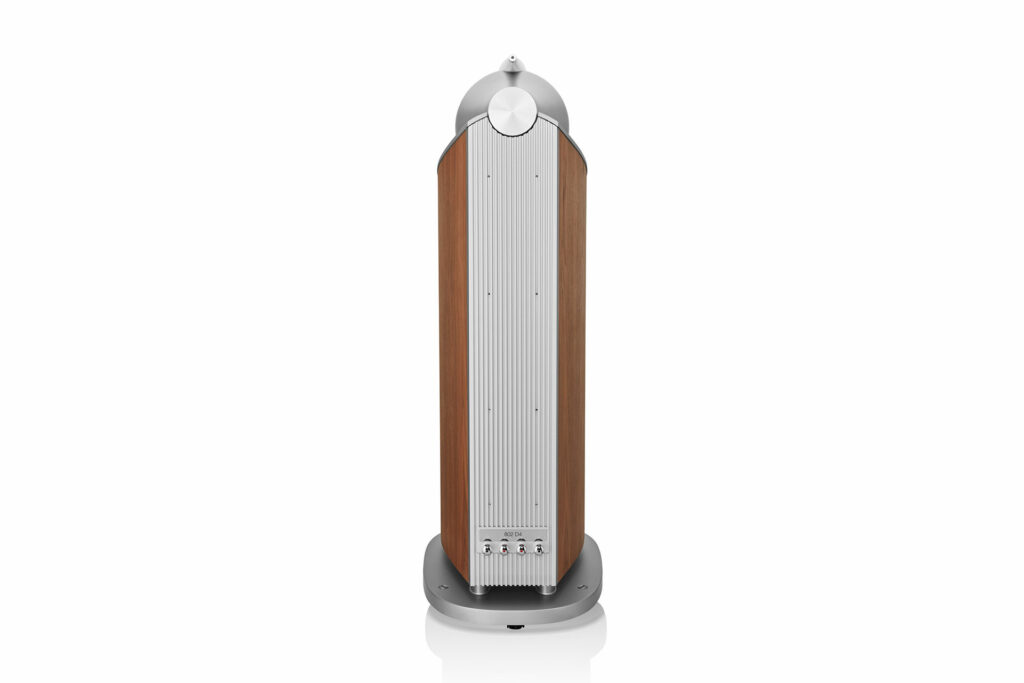
Who Is the Competition for the Bowers & Wilkins 802 D2 Loudspeakers?
There are so many very worthy competitors in this lofty space, but let’s start with a speaker close to home in the Bowers & Wilkins 804 D4. At $14,000 per pair, you get a whole lot of the 802 D4 experience for a hell of a lot less money. They won’t play quite as loud but that’s really nitpicking. Any bass lost is easily gained back (and then some) with a modern, room corrected sub like my $2,200 SVS SB-4000 or even something a little less beefy. I reviewed the Bowers & Wilkins 803s D4s and at $20,000 they also can be an option based on your budget. In a perfect world, I like 802s best, as I feel 801s are just a little too big for me and 802s feels like the Goldilocks zone.
Another speaker with a stunning audiophile legacy and that I am personally still a very big fan of is the latest version of the Wilson Audio Sasha V. With a price of $48,900 per pair, the value of the Wilson speaker is nowhere near as good as the Bowers & Wilkins 802 D4s. Wilson is the originator of the custom paint finish option in the audiophile speaker world, and perhaps nobody does it better at this stage. The two-piece construction of the Wilson Audio Sasha V is still an odd throwback to the days of David Wilson’s WATT studio/location monitor and the somewhat add-on Puppy bass module that turned the WATT Puppy into a very manageable, very high-end audiophile speaker that could fit into any home. Today’s Wilson’s no longer have Focal tweeters, but their modern speakers have a less bright, more engaging high end. They image like few other speakers and are very placement critical. Wilson Audio speakers aren’t as easy to drive as versions from the long-ago past, but they aren’t hard to drive. Like the 802 D4s, they simply appreciate some excellent electronics backing them up.
The Focal Sopra No. 2 at $22,000 per pair is the speaker at the core of my last audiophile system in my 1950s mid-century home that I sold about five years ago. The speakers stayed with the Hulu executive that bought the place, as did the Crestron smart home, the Classé electronics, and a lot of other AV goodies. The Focal Sopra No. 2s have gone up a lot in retail price since I bought them at $14,000 per pair, but they still represent a very good value in this category. Like Wilson speakers, you can get custom paint finishes, but Focal stocks more unique colors without the need for a custom order. The Focals are perhaps the easiest speaker in this category to drive, which allows you to get a little more fancy with your amplifier selection if you’d like. Where the Focals fail compared to the Bowers & Wilkins is their ability to present such a broad range of music in a truly engaging way. I simply enjoy the Bowers & Wilkins 802s better on a day-to-day basis and that comes as a bit of a shock to me, as I loved my time owning Focal Sopra No. 2s. The Bowers & Wilkins 802 D4s are just better and well worth the few extra grand.
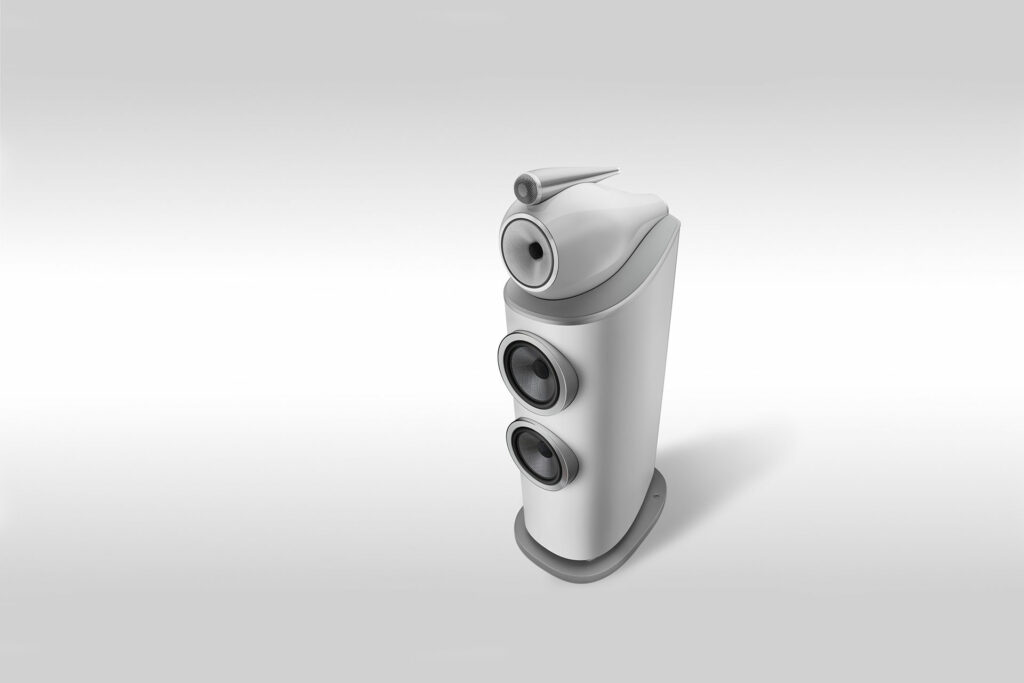
Final Thoughts on The Bowers & Wilkins 802 D4 Loudspeakers
I thought I knew what I was getting into with this review, having owned, reviewed, sold, and experienced Bowers & Wilkins speakers for over 30 years. I was wrong. The 802 D4 speakers grossly exceeded my expectations in nearly every way. Gone is the bright tweeter and in is some of the best, most accurate imaging that I’ve ever heard in a speaker at any price. At low levels, the Bowers & Wilkins 802 D4s can resolve the most intimate musical details. At high levels, the speaker’s modern upgrades make for a more visceral, impactful sound.
The Bowers & Wilkins 802s are the Boeing 787 Dreamliner of audiophile speakers. The designers and engineers back in England are given free range to seek any and every possible upgrade when it comes to Bowers & Wilkins speakers. They test these upgrades out every few years in their Signature Series speakers, which just came to market with some midrange upgrades and a better mount for the tweeter module. The Bowers & Wilkins Signature 801s and 805s are significantly more money, and I’ve heard the A/B test. It will cost you a pretty penny to get that next level of excellence, but they never stop striving for incrementally better performance on every level of speakers sold under the brand.
I couldn’t be happier with the Bowers & Wilkins D4 loudspeakers. They’ve exceeded my already high expectations in nearly every way. They’ve made me forget about wanting another pair of Focals, which I really thought I did. You don’t see this next comment from me very often, but I have no choice but to cut a check for these speakers. Simply put, they can’t go back to England. They need to be with me as my reference speaker here at the beach in California.


